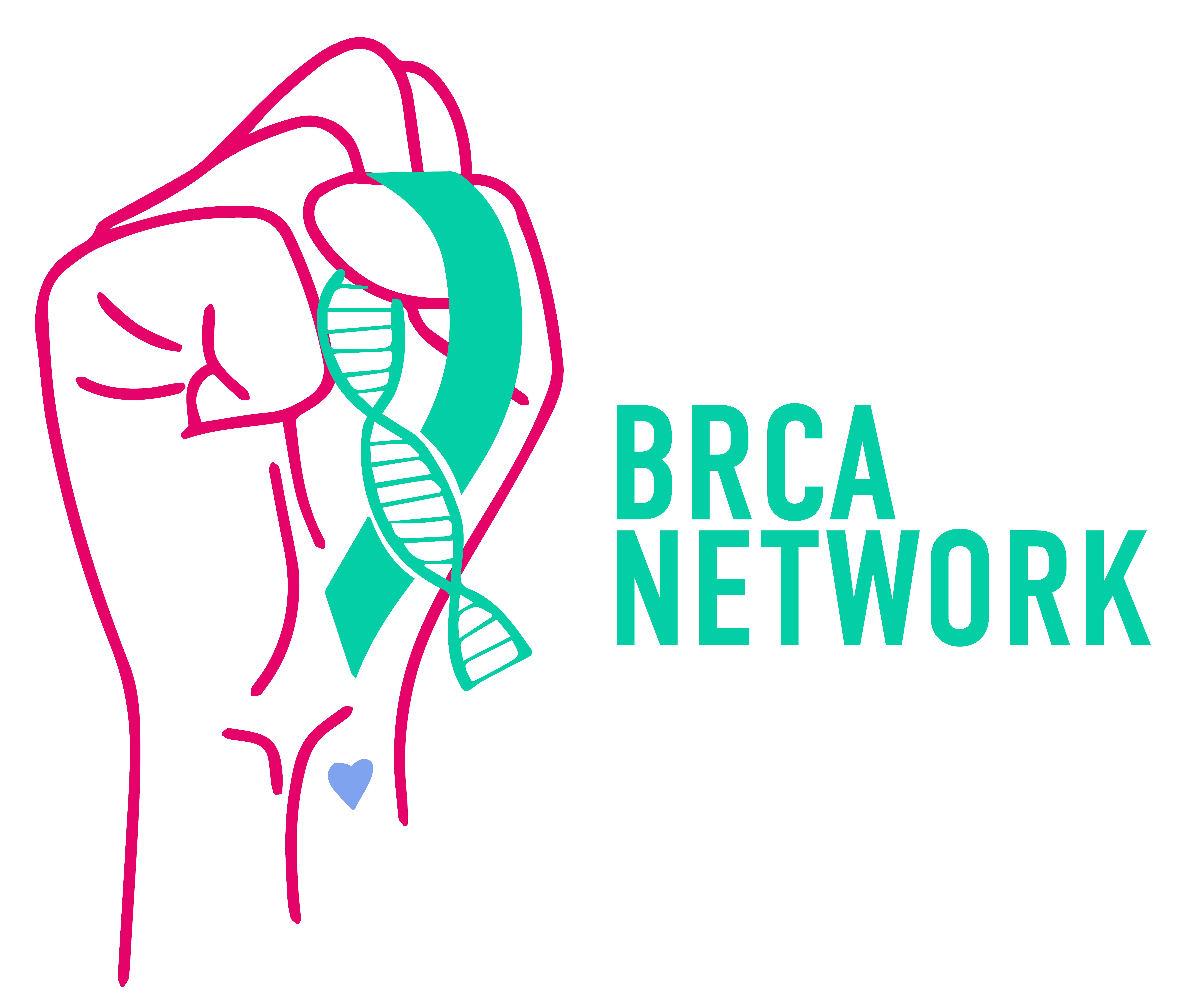Glossary
B
Bilateral risk-reducing mastectomy: surgical removal of both breasts in order to lower the risk for cancer.
BRCA: BRCA refers to two genes BRCA1 and BRCA2. Mutations in these genes cause an increased risk for breast, ovarian, prostate, pancreatic, and melanoma cancers. Although BRCA1 and BRCA2 are often referenced together, they are two separate genes.
C
CA-125: a blood test used to detect signs of ovarian cancer or monitor response to treatment.
Carcinogens: substances or environmental factors that have been shown to cause cancer.
Chemoprevention: the use of medications to prevent cancer.
Comorbidity: in cancer medicine, comorbidity refers to when a patient has another disease or condition that may complicate the treatment of their cancer.
Contralateral breast cancer: breast cancer in the other breast of patients who are already diagnosed with breast cancer.
D
DIEP: Diep Inferior Epigastric Perforator is a type of breast flap reconstruction surgery.
E
Early menopause: menopause occurring between 40-45 years of age.
Early-stage: stage is a term used to describe how much a cancer has spread. Cancers are staged from stage 0 (preinvasive cancer) to stage 4. Although staging varies by cancer type, usually the lower the number, the less the cancer has spread. Early-stage cancers usually refer to stage 0-2.
ER/PR-negative: a type of breast cancer. Doctors use tests called tumour marker tests to help them choose the best breast cancer treatment. Two important tumour marker tests check to see if tumours respond to the hormones oestrogen (ER) and progesterone (PR). Tumours that are negative for oestrogen and progesterone are called ER/PR-negative. ER/PR-negative breast cancers are often treated with chemotherapy. They are not usually treated with hormone therapies such as tamoxifen and letrozole.
ER/PR-positive: a type of breast cancer. Doctors use tests called tumour marker tests to help them choose the best breast cancer treatment. Two important tumour marker tests check to see if tumours respond to the hormones oestrogen (ER) and progesterone (PR). Tumours that are positive for oestrogen and progesterone are called ER/PR-positive. Hormone sensitive breast cancers are treated with hormone therapies such as tamoxifen and letrozole.
F
Fallopian tubes: the tubes that connect each ovary to the uterus. Eggs released from the ovaries pass through the fallopian tubes to get to the uterus.
Family history: family history of a disease in a person refers to the presence of the disease in biological relatives of this person.
First-degree relative: a first-degree relative refers to any of the following blood relatives: mother, father, sister, brother, son or daughter
G
Genetic counselling: service provided by a qualified healthcare professional providing a comprehensive assessment of familial risk for hereditary diseases through family analysis and other methods, patient education, discussion of the advantages and disadvantages of genetic testing, interpretation of the results after screening, and discussion of treatment options.
Genetic mutation: a change in a DNA sequence.
Genetic test: a type of medical test that identifies changes in chromosomes, genes, or proteins. The results of a genetic test can confirm or exclude a suspected genetic condition or help establish the likelihood that a person will have or transmit the condition.
Germline mutation: another name for an inherited mutation linked to a disease, like cancer. Examples of germline mutations include BRCA1, BRCA2, PALB2, ATM and others.
H
HER2-negative: a type of cancer marker test. Doctors test cancers for a protein called HER2 to see if the cancers are likely to respond to a type of treatment known as “anti-HER2 therapy.” Cancers that test negative for the HER2 marker are called HER2-negative. These cancers don’t respond to anti-HER2 therapy.
HER2-positive: a type of breast cancer. Doctors use tests called tumour marker tests to help them choose the best breast cancer treatment. An important tumour marker test looks at whether a tumour has a receptor known as HER2neu (HER2). Tumours that are HER2-positive are often treated with targeted therapies such as Herceptin or Perjeta.
Hereditary cancer: hereditary cancers are caused by genetic mutations that can be passed from one generation to the next. A person who inherits a genetic mutation from their parents will have a higher lifetime risk for certain types of cancer. A family with hereditary cancer may have many family members who have been diagnosed. Many different genes have been identified that can increase the risk for different types of cancer.
Hormone Replacement Therapy (HRT) or Menopausal Hormone Therapy (MHT): treatment with hormones to replace natural hormones when the body does not make enough.
I
INAMI: INAMI (National Institute for Health and Disability Insurance) is a federal public social security institution. It organises, manages and controls compulsory health care and compensation insurance in Belgium.
Inherited mutation: inherited mutations are mutations that can be passed down from parents to their children. Inherited mutations in the BRCA1 and 2 genes, for example,
are associated with a very high risk for cancer and can cause cancer to run in families.
IVF: In Vitro Fertilisation is a fertility treatment where the woman’s eggs are removed and fertilised in a test tube.
M
Magnetic Resonance Imaging (MRI): a technique for looking for abnormalities such as cancer using magnetic fields. Breast MRI is typically recommended as a screening tool for breast cancer in high-risk women.
Mammography: mammography is a type of x-ray used to look for abnormalities or cancer in the breast. Also known as mammograms.
Mastectomy: surgical removal of one or both breasts.
Menopause: the final menstrual period, occurred when there have been no menstrual periods for one year.
Metastasis: an area where cancer has spread beyond the organ where the cancer began.
Metastatic: metastatic cancers are those that have spread beyond the organ where the cancer began to other organs. Metastatic cancers are also referred to as stage 4 cancers.
O
Oophorectomy: removal of the ovaries.
Osteoporosis: osteoporosis is a weakening of the bones that can make them more likely to break. Osteoporosis may be caused by ageing, loss of hormones due to menopause, malnutrition, smoking or other factors.
P
PARP inhibitor: PARP inhibitors are a type of cancer treatment known as targeted therapy.
Preimplantation Genetic Diagnosis or PGD: (also known as Preimplantation Genetic Testing or PGT) is a medical procedure that allows people who carry a disease-causing hereditary mutation to have children who are free from the specific mutation that causes the disease.
Previvor: the word previvor means “survivor of a (high risk) predisposition for cancer.” The term was coined in 2000 by FORCE to give a label and community to people with inherited mutations who have not been diagnosed with cancer.
R
Risk reducing salpingo-oophorectomy: surgical removal of healthy ovaries and fallopian tubes in order to lower the risk for cancer.
S
Salpingectomy: removal of the fallopian tubes.
Salpingo-oophorectomy: removal of the fallopian tubes and the ovaries.
Second-degree relative: a second-degree relative refers to any of the following blood relatives: grandmother, grandfather, granddaughter, grandson, uncle, aunt, niece, nephew, half-sister or half-brother.
Nutrition: Lorem ipsum dolor sit amet, consectetur adipiscing elit, sed do eiusmod tempor incididunt ut labore et dolore magna aliqua.
Sporadic breast cancer: sporadic breast cancer is breast cancer that occurs due to mutations that happen during a person’s lifetime and not due to inherited mutations.
Sporadic mutation: a sporadic mutation is a mutation that occurs during a person’s lifetime and is not inherited from a parent.
Surgically-induced menopause: it occurs when the ovaries are removed in an operation. Due to the abrupt cut-off of ovarian hormones, surgical menopause can cause a sudden onset of menopause symptoms.
T
Triple-negative breast cancer (TNBC): a type of breast cancer. Doctors use tests called tumour marker tests to help them choose the best breast cancer treatment. Three important tumour marker tests are Oestrogen (ER), Progesterone (PR), and Her2. Tumours that test negative for ER, PR and HER2 are called triple-negative breast cancer. These breast cancers are often treated with chemotherapy.
V
Variant of Uncertain Significance (VUS): a type of genetic test result. These results are considered by experts as “inconclusive” test results because they are neither positive nor negative for a known mutation. This means that, at the time of testing, the laboratory cannot determine whether the gene change is a harmful change which increases the risk for cancer, or a benign variant which does not increase cancer risk.

 BRCA network asbl/vzw
BRCA network asbl/vzw